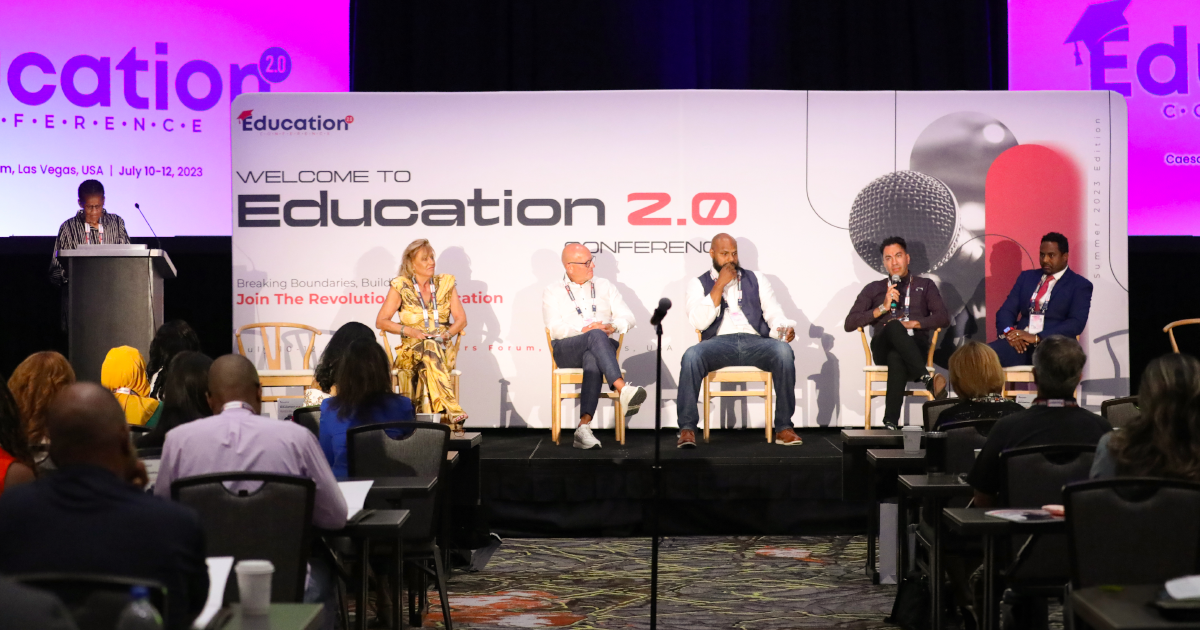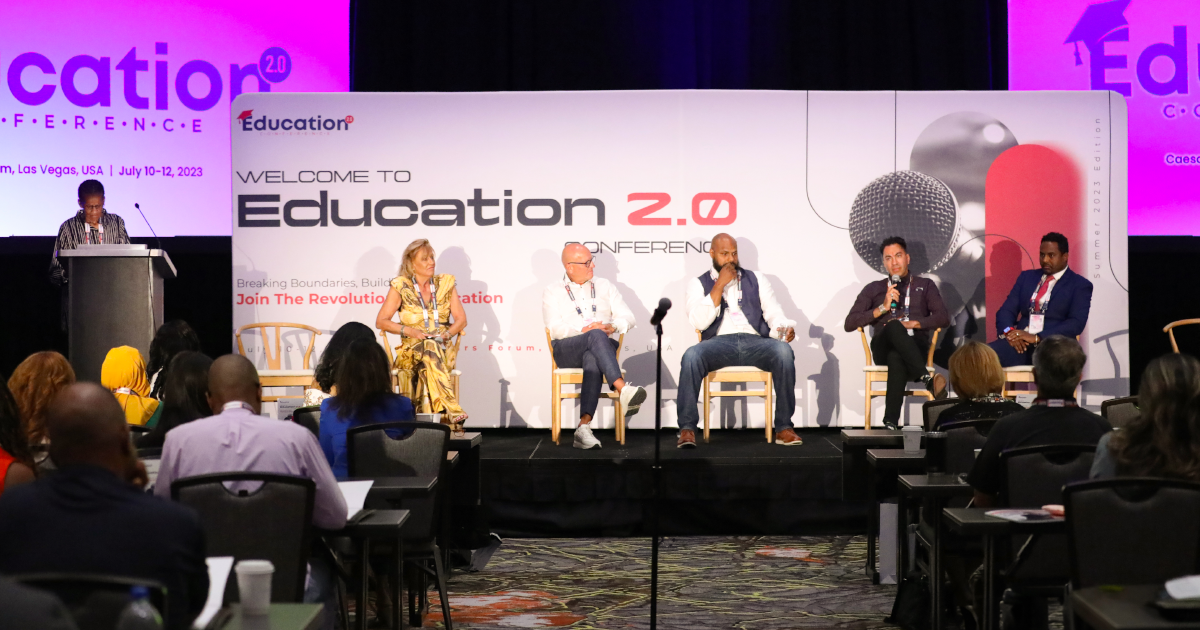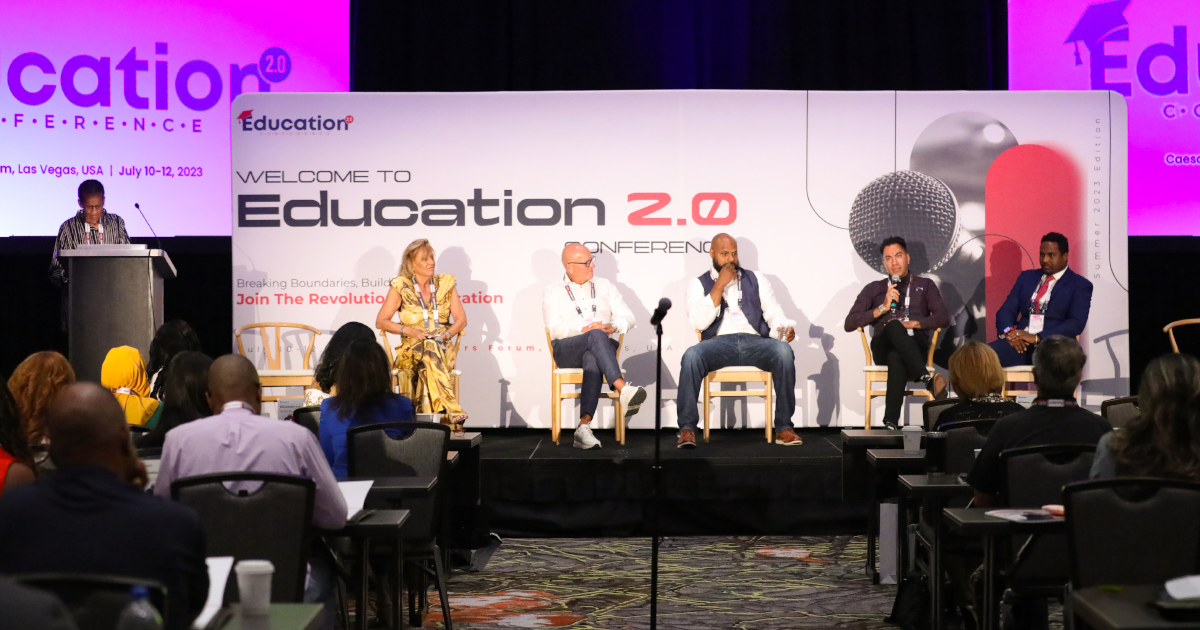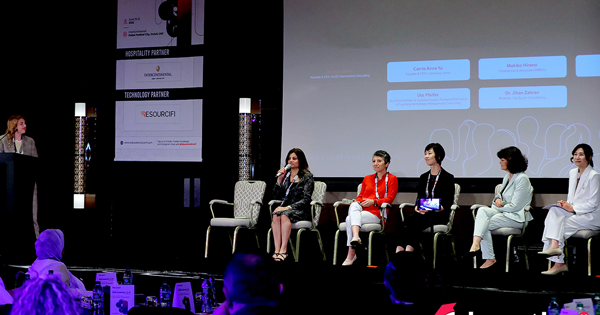Education 2.0 Conference Exposes Rising Fraud In AI-Driven Classrooms

Strong 8k brings an ultra-HD IPTV experience to your living room and your pocket.
What if the student who tops your class was never really present? What if their essay, polished and insightful, was written entirely by AI in seconds? This is not a glimpse into the future—it is already happening. From AI-generated assignments to deepfake attendance, academic fraud is taking on new digital forms that are harder than ever to detect.
At education events in 2025, such as the Education 2.0 Conference, experts are addressing this rise in classroom fraud as a critical issue facing modern learning environments. They are calling for urgent action to redefine how we evaluate student effort, verify authenticity, and protect the integrity of education.
Let’s explore how academic dishonesty is evolving in the digital age. We’ll examine what educators, EdTech leaders, and policymakers can do to address it before it becomes the new norm.
Digital Deception: How Students Are Bypassing Effort
Advanced tools are reshaping how academic dishonesty occurs. These tools are not only sophisticated but often indistinguishable from authentic student work. Below are some of the most common forms of technology-enabled fraud:
- AI-Generated Essays: Tools like ChatGPT and Jasper can produce long-form assignments in seconds, written in natural academic language that mimics human tone.
- Automated Coding Solutions: GitHub Copilot and similar platforms assist in generating functional code, reducing the need for students to engage with the logic or problem-solving process.
- Smart Paraphrasers: These tools rephrase content to avoid plagiarism detection, masking the source while retaining the structure.
- Deepfake Attendance: Pre-recorded or AI-generated avatars are used to simulate live presence in video classes, allowing students to skip participation while appearing present.
Technology is reshaping academic dishonesty in unexpected ways. At an education summit, such as the Education 2.0 Conference, experts are addressing rising scam offenses, including AI-generated essays and deepfake attendance records. These tactics blur the line between genuine learning and simulation, raising urgent questions about trust, assessment, and the future of education.
Why Integrity In Learning Is At Risk
The growing reliance on AI tools for dishonest purposes is not just a challenge for individual instructors. It poses a systemic threat to how education is delivered and validated.
- A Shift In Educational Values: When students can produce high-quality assignments without critical thinking or personal effort, the focus of education moves from learning to mere submission. This undermines the purpose of academic inquiry and personal development.
- Assessment Models Under Pressure: Rubrics designed for traditional education are ill-equipped to handle algorithmically generated content. As AI tools become more integrated into student workflows, it becomes increasingly difficult to determine what is original and what is outsourced.
- Widening Access Gaps: Students from more privileged backgrounds often have access to advanced AI tools, giving them an unfair edge. The use of such technology without clear guidelines further amplifies inequities in education systems around the world.
Practical Warning Signs For Educators
Academic dishonesty is evolving rapidly, driven by AI-written essays, auto-generated code, and deepfake attendance records. Fraud in classrooms is no longer easy to detect or contain. At an education summit, experts raised urgent concerns about such scam offenses and emphasized the growing need to protect the integrity of digital-age learning environments. Educators should watch for these potential indicators of AI misuse:
- Sudden and dramatic improvements in student writing quality.
- Unusually polished submissions with minimal editing or revisions.
- Assignments lacking depth, nuance, or personal insight.
- Repetitive phrases or robotic tone suggesting automated generation.
- Minimal engagement during virtual classes, with static video presence.
These signs alone may not prove fraud, but they serve as necessary warning signals. They help educators identify patterns that suggest possible misconduct and encourage closer examination before making judgments about a student’s work or behavior in digital learning environments.
Building Resilient Learning Systems
The most effective response to AI misuse in education is not prohibition. It is reinvention. Institutions must embrace innovation while embedding safeguards to preserve integrity.
Recommended strategies include:
- Redesigning Assessments: Move toward iterative assignments that include oral reflections, process logs, and peer feedback. These methods make it harder to fake the work.
- Deploying AI-Detection Tools: Invest in software that can detect patterns typical of AI-generated text or monitor behavioral cues in video-based learning.
- Embedding Ethics Into Curriculum: Teach students about digital responsibility early. This helps them see integrity as part of their professional development, not just a rule to follow.
- Partnering With EdTech Developers: Encourage the creation of platforms that include built-in safeguards such as real-time monitoring, traceable submission logs, and attendance verification.
- Creating Cross-Institutional Policies: Work with global education summits to standardize ethical guidelines for AI use, ensuring consistency across schools, universities, and online platforms.
These solutions mark a shift from reactive policing to proactive design. However, they are only the beginning. As digital tools grow more advanced, so must our frameworks for trust. At an education summit, the conversation about fraud underscores the urgent need to redefine meaningful learning in an era of intelligent shortcuts.
Rethinking The Future Of Learning
AI is not the downfall of education. It is a chance to rethink how we teach, assess, and inspire. When used with intention, technology can support deeper learning by shifting the focus from polished outputs to genuine engagement. Assignments that prioritize reasoning, collaboration, and personal insight become harder to fake—and more meaningful for students.
The future of education lies not in catching cheaters, but in building systems that discourage cheating by design. This means utilizing tools that promote transparency, refining assessments to reflect real-world skills, and establishing digital spaces built on trust. As AI continues to evolve, so must our understanding of what it means to learn. Integrity, not automation, should define tomorrow’s classroom.
Time To Fight AI-Driven Scam Offenses, Together
The rise of AI-driven fraud is no longer a classroom anomaly. It is a growing concern shaping discussions at major education events in 2025. At the Education 2.0 Conference, experts are examining how academic fraud is challenging traditional systems and calling for urgent, collective action to protect the integrity of learning.
Educators, policymakers, EdTech developers, and researchers all have a role in building smarter, more honest learning environments. This moment is not only about improving detection but also about redesigning education in ways that make misconduct less appealing and less effective. The future of education will depend on our ability to balance innovation with values like trust, accountability, and curiosity. This is the time to shape systems that prioritize real learning over simulated success.
Note: IndiBlogHub features both user-submitted and editorial content. We do not verify third-party contributions. Read our Disclaimer and Privacy Policyfor details.







